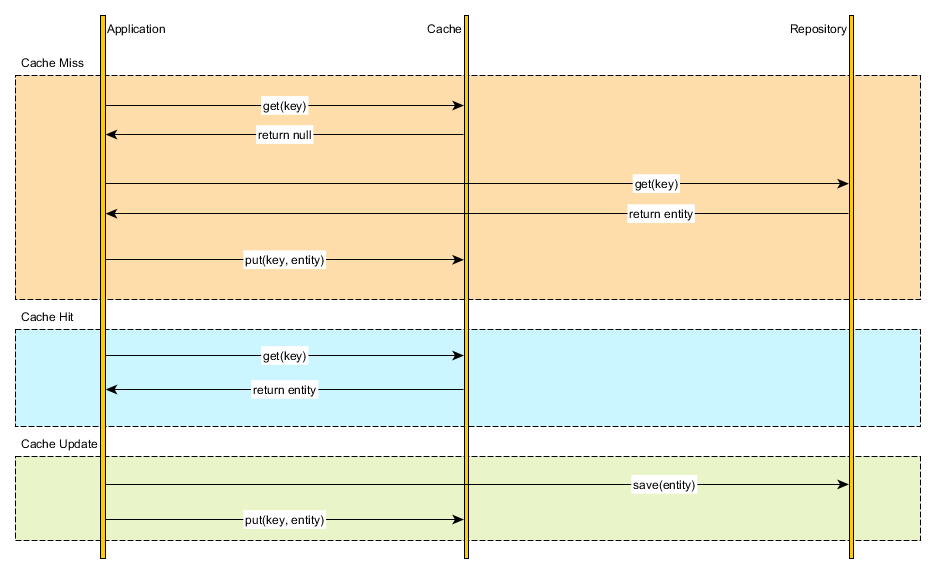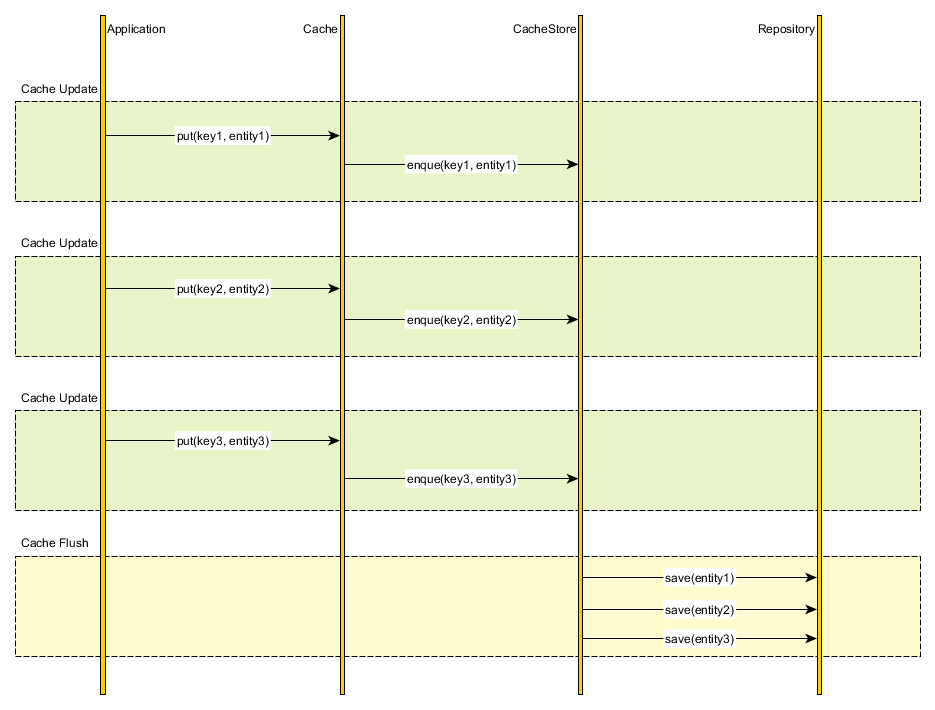A beginner’s guide to Cache synchronization strategies
Introduction
A system of record is the authoritative data source when information is scattered among various data providers. When we introduce a caching solution, we automatically duplicate our data. To avoid inconsistent reads and data integrity issues, it’s very important to synchronize the database and the cache (whenever a change occurs into the system).
There are various ways to keep the cache and the underlying database in sync and this article will present some of the most common cache synchronization strategies.
Cache-aside
The application code can manually manage both the database and the cache information. The application logic inspects the cache before hitting the database and it updates the cache after any database modification.
Mixing caching management and application is not very appealing, especially if we have to repeat these steps in every data retrieval method. Leveraging an Aspect-Oriented caching interceptor can mitigate the cache leaking into the application code, but it doesn’t exonerate us from making sure that both the database and the cache are properly synchronized.
Read-through
Instead of managing both the database and the cache, we can simply delegate the database synchronization to the cache provider. All data interactions is therefore done through the cache abstraction layer.
Upon fetching a cache entry, the Cache verifies the cached element availability and loads the underlying resource on our behalf. The application uses the cache as the system of record and the cache is able to auto-populate on demand.
Write-through
Analogous to the read-through data fetching strategy, the cache can update the underlying database every time a cache entry is changed.
Although the database and the cache are updated synchronously, we have the liberty of choosing the transaction boundaries according to our current business requirements.
- If strong consistency is mandatory and the cache provider offers an XAResource we can then enlist the cache and the database in the same global transaction. The database and the cache are therefore updated in a single atomic unit-of-work
- If consistency can be weaken, we can update the cache and the database sequentially, without using a global transaction. Usually the cache is changed first and if the database update fails, the cache can use a compensating action to roll-back the current transaction changes
Write-behind
If strong consistency is not mandated, we can simply enqueue the cache changes and periodically flush them to the database.
This strategy is employed by the Java Persistence EntityManager (first-level cache), all entity state transitions being flushed towards the end of the current running transaction (or when a query is issued).
Although it breaks transaction guarantees, the write-behind caching strategy can outperform the write-through policy, because database updates can be batched and the number of DML transactions is also reduced.
| Reference: | A beginner’s guide to Cache synchronization strategies from our JCG partner Vlad Mihalcea at the Vlad Mihalcea’s Blog blog. |








